To tailor your vintage wool cardigan, start by evaluating the fit; make certain it's not too tight or loose. Measure key areas like sleeve length and body width for adjustments. Use sharp fabric scissors and a sewing machine with a walking foot for clean alterations. If sleeves are too long, unpick the cuff seams, measure, and shorten them carefully, finishing edges to prevent fraying. For body fit, try it on inside out, pin excess fabric, and sew with a straight stitch. With a few careful adjustments, your cardigan can fit perfectly while retaining its vintage charm. There's more to explore!
Assessing the Cardigan Fit
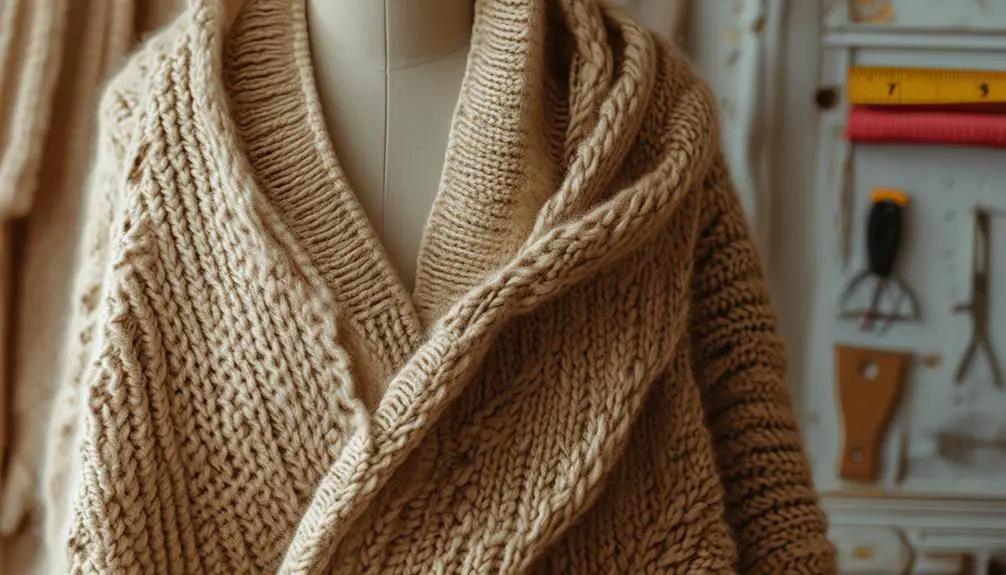
When you slip on your vintage wool cardigan, take a moment to really assess how it fits. Start by evaluating the body width; it shouldn't feel too tight or too loose. Understanding the unique characteristics of vintage clothing, such as fabric types and construction techniques, can help you determine how well the cardigan should fit.
Pay attention to the sleeve length as well—are they brushing against your wrists, or do they extend too far? The overall proportion to your body shape is essential; a well-fitted cardigan should complement your silhouette without causing discomfort.
Next, measure key dimensions to pinpoint specific areas needing adjustment. Use a measuring tape to check the chest circumference, sleeve length from shoulder to cuff, and the length from shoulder to hem. If you notice any discomfort, like restricted movement in your arms or excess fabric bunching around your torso, take note; this will guide your tailoring decisions.
For instance, vintage wool often has a unique structure that may require more delicate handling during alterations, especially if it's from a specific era known for high-quality craftsmanship, such as those from the vintage clothing trends of the past.
Consider the cardigan's style, too. A fitted design might demand more significant alterations compared to a looser, oversized version. Finally, factor in the unique characteristics of vintage wool, as its fabric content and structure can influence how effectively it can be tailored to achieve the perfect fit.
Identifying Areas for Adjustment
After evaluating the fit of your vintage wool cardigan, it's time to pinpoint exactly where adjustments are needed. Start by trying it on to assess its overall fit. Make sure to identify specific areas that feel too loose—common adjustment points include the body and sleeves.
If you're working with a vintage piece, consider that the craftsmanship and fabric quality can greatly affect the fit, as noted in identifying vintage clothing. Measure the sleeve length from the shoulder seam; they should ideally reach your wrist. If they're too long, you can shorten them without compromising the cardigan's style.
Next, check the width of the body by measuring from underarm to underarm. If the cardigan is excessively large, you might want to take in the side seams for a more tailored appearance.
Also, pay attention to the shoulder seams. If they sit too far down your arm, they may need restructuring to achieve a better silhouette.
Lastly, don't forget the hemline. Shortening it can create a more proportionate look, ensuring the new length flatters your body shape.
When you're ready to make these changes, remember that the cardigan should feel comfortable and look stylish, whether it's turned inside out or worn normally. With these adjustments, you'll love how your cardigan fits!
Tailoring Techniques and Tools
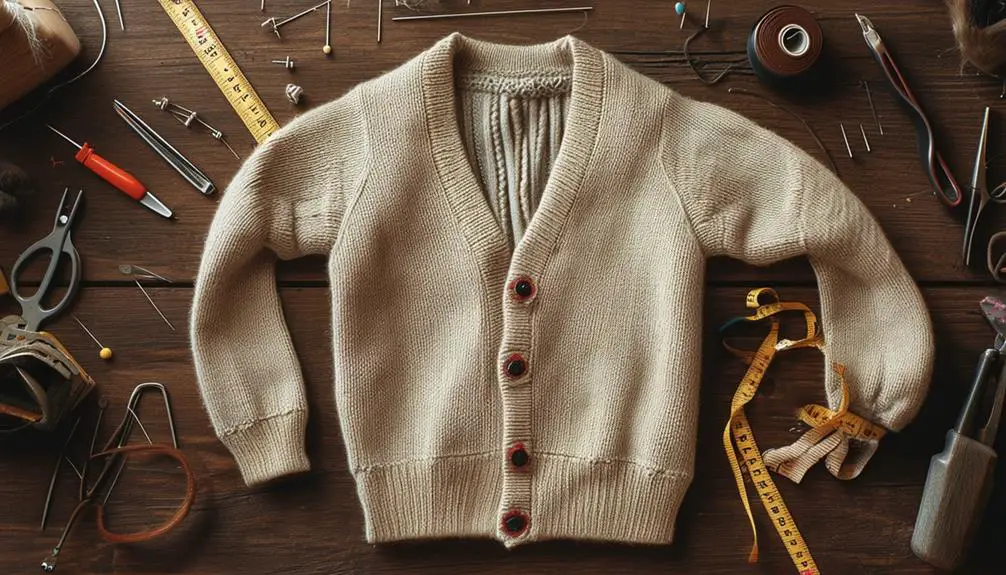
Tailoring a vintage wool cardigan requires the right techniques and tools to guarantee a polished finish. By following a few essential steps, you can achieve a tailored look while preserving the integrity of the fabric.
- Sharp Fabric Scissors: For clean cuts and to prevent fraying.
- Sewing Machine with Walking Foot: To manage wool thickness and prevent shifting.
- Tailor's Chalk: To mark alterations accurately before cutting.
Start by measuring and marking your adjustments with tailor's chalk. This allows for precise modifications.
Use sharp fabric scissors to cut excess material, ensuring clean edges that won't fray. When stitching, a sewing machine with a walking foot is invaluable; it helps maintain control over thick wool layers, leading to a neater finish.
If you're resizing the body, pin the excess fabric along the side seams and sew a straight stitch, but be mindful to leave enough room for movement.
This way, your cardigan won't only fit better but also maintain comfort. With these techniques and tools, you'll transform your vintage cardigan into a piece that fits you perfectly, showcasing your unique style.
Adjusting Sleeve Length
Adjusting the sleeve length on a vintage wool cardigan can breathe new life into your favorite piece, ensuring it fits you just right.
Start by carefully unpicking the seams at the cuff with a seam ripper; this will make the alteration process much smoother. Once you've freed the fabric, measure the desired sleeve length from the shoulder seam down to where you want the new cuff position. Use chalk to mark your fabric accurately before cutting.
When shortening the sleeves, remember to maintain a consistent width and shape. Taper the fabric gradually towards the cuff to avoid a boxy appearance.
After cutting, it's crucial to finish the raw edges to prevent fraying. A sewing machine with a zigzag stitch works perfectly for this task, giving your cardigan a polished look.
For that tailored finish, fold the cuff over and sew it down, ensuring the stitching is even and neat. This final touch secures your new sleeve length and enhances the overall appearance of the cardigan.
With these steps, your vintage wool cardigan won't only fit better but also look revitalized and stylish!
Modifying the Body Fit
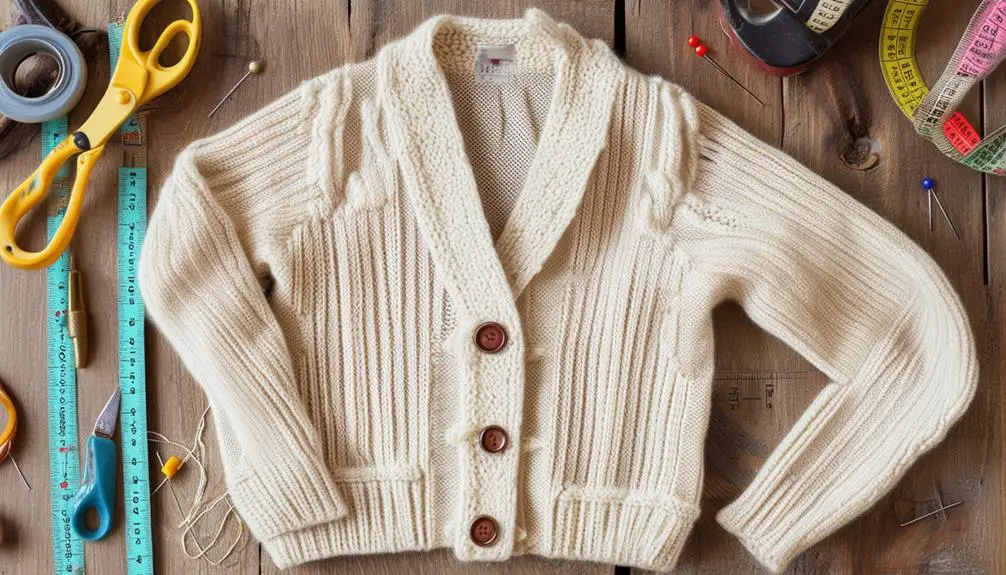
Modifying the body fit of your vintage wool cardigan can transform its silhouette into something that flatters your figure perfectly. To get started, try the cardigan on inside out. This helps you pinpoint exactly where to take in the fabric, usually along the side seams for a more tailored look.
- Measure and mark the desired reduction in width.
- Pin the excess fabric securely to maintain alignment while sewing.
- Finish edges with a zigzag stitch to prevent fraying.
Once you've marked your adjustments, grab your sewing machine. Use a straight stitch with a seam allowance of about 1/4 to 1/2 inch.
Don't forget to backstitch at the start and end for durability. After sewing, trim any excess fabric to reduce bulk.
Caring for Your Tailored Cardigan
Taking proper care of your tailored wool cardigan can greatly extend its lifespan and keep it looking sharp for years to come. Start by regularly spritzing your cardigan with a light mist of water. This helps maintain its shape, but be careful not to saturate the fabric, as excess moisture can cause damage.
When it comes to storage, keep your cardigan in a cool, dry place. Folding it's best, as hanging can lead to stretching and distortion of that perfect tailored fit.
For washing, opt for hand washing or use a gentle cycle with cold water. This preserves your cardigan's tailored alterations and prevents felting, ensuring it retains that sleek silhouette.
Avoid the dryer at all costs; instead, air dry your cardigan flat on a clean towel. This prevents shrinking and maintains the integrity of those carefully made adjustments.
If you notice pilling, don't worry! Use a fabric shaver or a lint roller to gently remove any fuzz without harming the tailored fabric.
Emotional Connection to Vintage Pieces
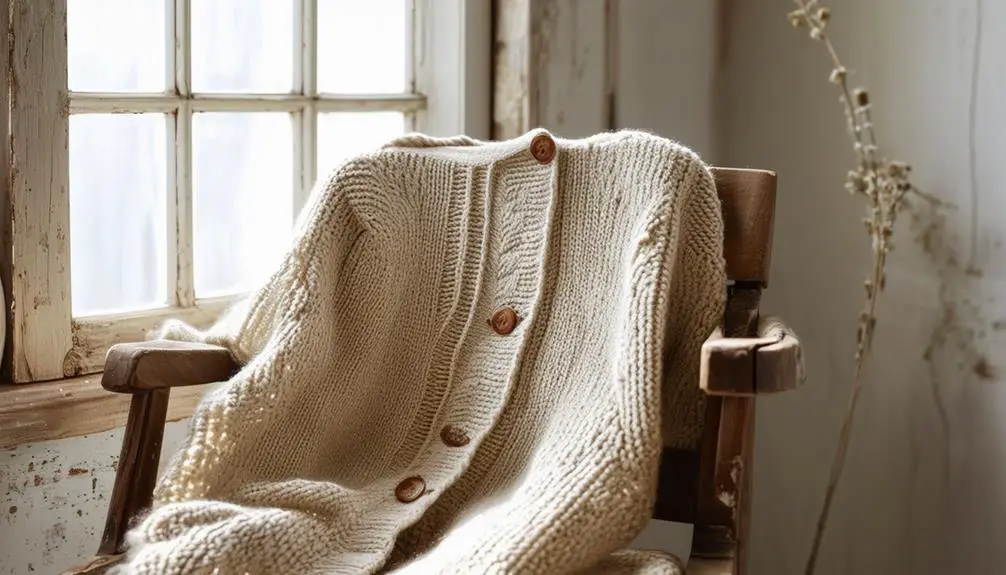
While you may wear your vintage wool cardigan for its warmth and style, it often carries a deeper emotional significance. Each stitch and thread tells a story, linking you to memories and moments that are uniquely yours. Understanding the history and value of vintage clothing can enhance your appreciation for these pieces.
You might remember a loved one who wore it, their essence woven into the fabric. The craftsmanship reflects a bygone era, connecting you to fashion history in a tangible way. It may evoke nostalgia, reminding you of adventures and milestones shared while wearing it.
This emotional attachment makes your cardigan more than just clothing; it's a piece of your identity. You find joy in the tales behind it, from where you discovered it to the experiences it's accompanied you through.
Such connections inspire you to preserve the garment rather than discard it, leading to a desire for tailoring that guarantees the perfect fit. By investing in its upkeep, you cherish not just the cardigan, but the memories it embodies.
This vintage piece becomes a trusted companion in your wardrobe, enhancing your style while holding a special place in your heart. Embrace these emotions, and let them guide your tailoring journey.
Resources for Tailoring Support
Your vintage wool cardigan deserves a fit that reflects its unique character and your personal style. To achieve this, tap into various resources that can guide you through the tailoring process. Start by seeking out local tailors who specialize in knitwear or vintage garments. They possess the expertise to handle your cardigan with care.
Additionally, online platforms can be a treasure trove of information. Websites like knitalteration.com offer valuable tutorials and community support. Social media groups and knitting forums are great for sharing experiences and gathering tips from fellow enthusiasts. YouTube is another excellent resource, featuring instructional videos that demonstrate specific techniques for adjusting oversized bodies and sleeves.
Here's a handy table summarizing these resources:
| Resource Type | Description |
|---|---|
| Local Tailors | Specialized in knitwear and vintage garments. |
| Online Tutorials | Websites like knitalteration.com for guidance. |
| Social Media Groups | Communities sharing tips on tailoring. |
| YouTube Channels | Videos demonstrating tailoring techniques. |
| Professional Consultation | Assess fabric and construction before alterations. |
Frequently Asked Questions
Can a Wool Sweater Be Tailored?
Yes, you can tailor a wool sweater. However, the complexity of the task depends on the sweater's construction. It's best to consult a skilled tailor experienced with wool to achieve the perfect fit without damage.
How Do You Reshape a Wool Cardigan?
To reshape a wool cardigan, consult a tailor for fit assessment. They'll adjust side seams and sleeve lengths, ensuring comfort and style. Always prep your cardigan properly to avoid shrinking during alterations.
Can a Knit Cardigan Be Altered?
Yes, you can alter a knit cardigan. However, it's wise to consult a professional tailor experienced with knits. Together, you'll determine the best adjustments to achieve the perfect fit without compromising the fabric's integrity.
Can Woolen Clothes Be Altered?
Yes, you can alter woolen clothes, but it's essential to consult an experienced tailor. They'll assess the garment's construction and suggest the best methods, ensuring you achieve a great fit without damaging the fabric.
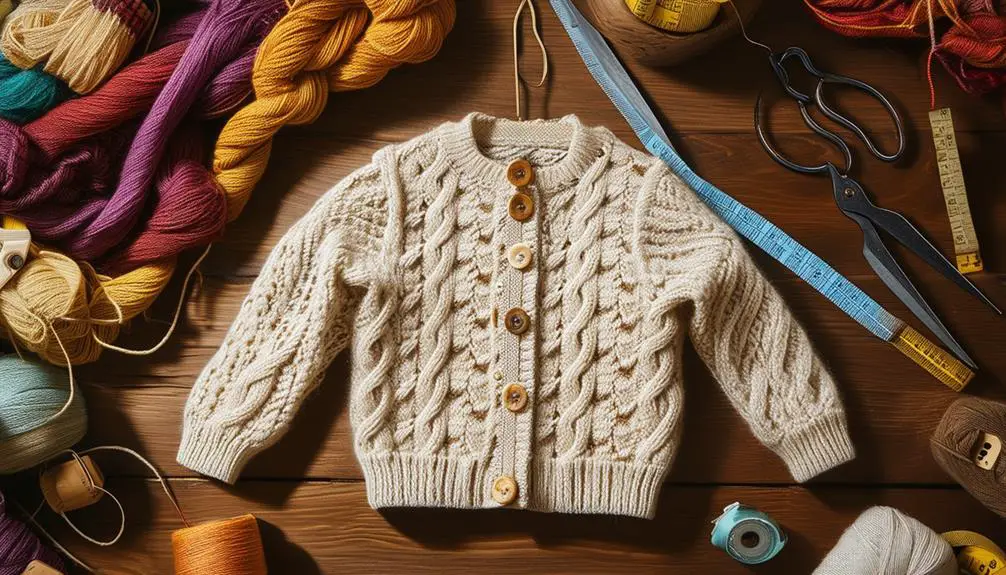


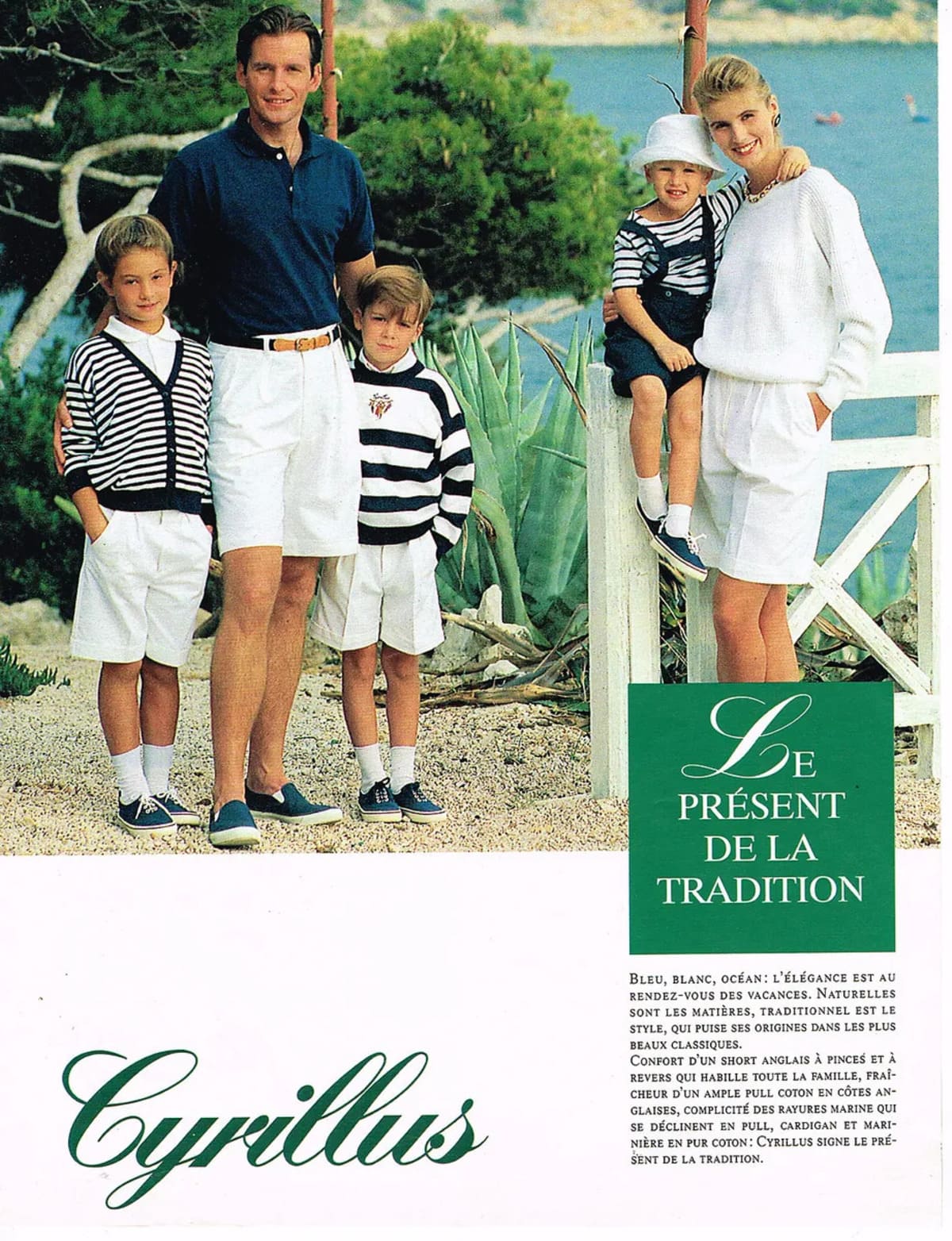

Thank you for your sharing. I am worried that I lack creative ideas. It is your article that makes me full of hope. Thank you. But, I have a question, can you help me?
Thank you for your sharing. I am worried that I lack creative ideas. It is your article that makes me full of hope. Thank you. But, I have a question, can you help me?